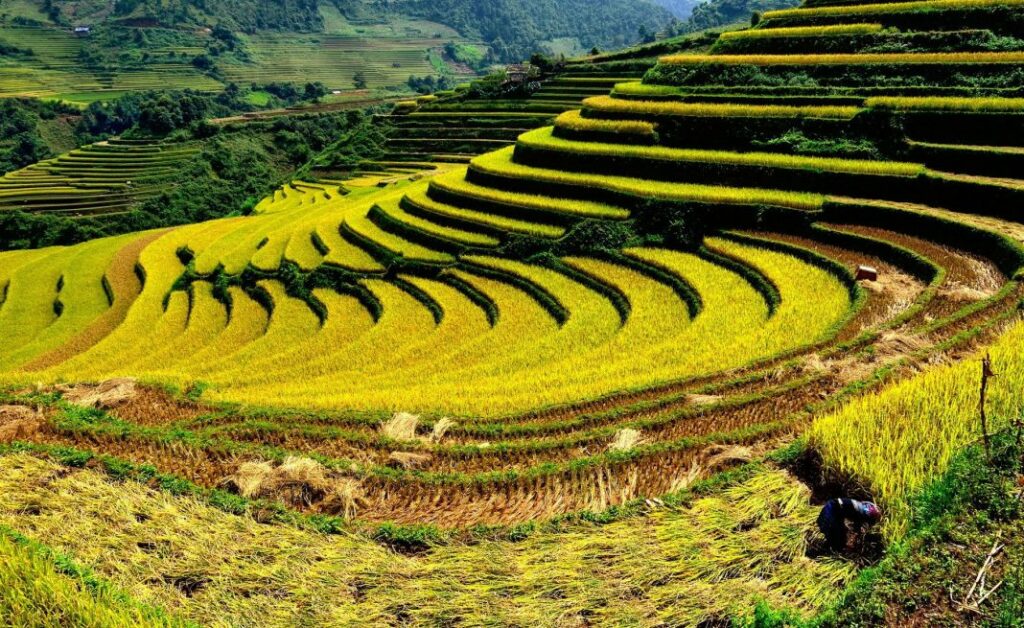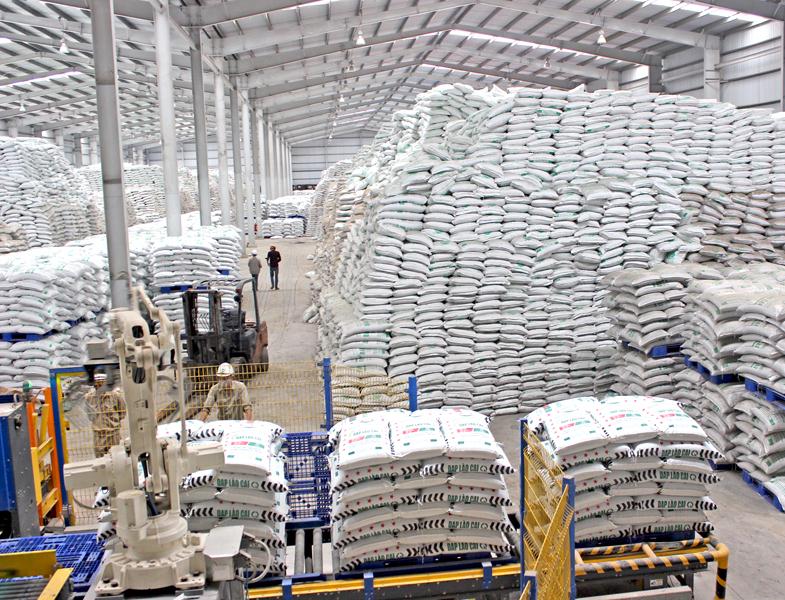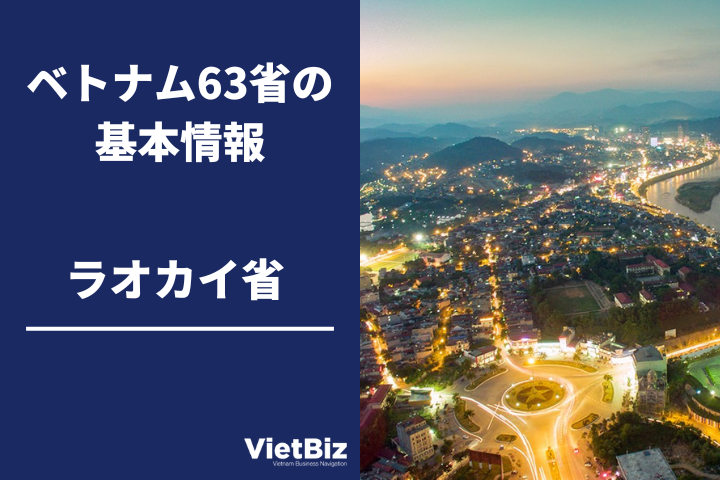Charactaristices of Lao Cai
This report provides a comprehensive overview of Lao Cai Province, Vietnam.
Geography
Lao Cai Province is a mountainous province, located in the middle of Northwest and Northeast Vietnam. It is 296 km away from Hanoi by rail and 345 km away by road. It has an area of 6.383,88 km2 (2,44% of the national territory and the 19th largest among 64 provinces). It borders Ha Giang Province to the east, Yen Bai Province to the south, Lai Chau Province to the west, and Yunnan Province of the People’s Republic of China to the north along a 203 km border.
Population
The population density is 120 inhabitants/㎢. The urban population is 202,000 (26,49%), the rural population is 560,000 (73,51%), the male population is 387,000 (50,81%), and the female population is 374,000 (49,19%).
Labor Resource and Average Saraly
In 2021, the productive population over 15 years old will be about 383,000, representing 49,4% of the total population, of which the food-trained labor force will be 24,6%.
The highest regional minimum wage is 4.16 million VND/month in Lao Cai City (Region II) and 3.25 million VND/month in more difficult areas (Region IV).
Infrastructure
An Giang is located on the upper reaches of the Mekong Delta, with convenient waterways for important domestic and international inter-regional transport and Lao Cai Province has three transportation systems: road, rail, and waterway. after 2022, construction will begin on an airport in Sapa in order to also develop an air route.
The province has five national highways with a total length of 445 km, the 72 km long Noi Bai-Lao Cai Expressway in Lao Cai Province, 16 provincial roads with a total length of 973 km, and approximately 9,000 km of roads connecting communes and villages.
In addition, the railroad is approximately 120 km long and has a gauge of 1,000 mm.
There are two major river routes through the province, the Red River and the Chai River, which offer transportation advantages, but the rivers in the region have not yet been invested in, leaving many waterfalls and rapids intact.
With regard to external transportation, Laokai’s transportation industry has close ties to Yunnan Province (China).
Industry Strengths

Lao Cai Province has three industrial parks with a total area of 1,285 hectares and one border economic zone with 15,929 hectares. 279 projects were attracted to the industrial parks and border economic zones in early 2022 with a total value of VND380,000 million. Of these, 248 are in operation, 2 are under construction, and 3 are dealing with procedures. Most of the projects (90%) are small-scale, while about 10% are large-scale projects. The larger projects are clustered in the Thang Long Industrial Park and are concentrated in the areas of metallurgy, chemicals, and fertilizers.
| 工業団地名 | Area(ha) | Main Industry |
| Lao Cai Border Gate Economic Zone | 2.734,48 ha | Land for construction, production processing, and processing is about 450.73 hectares; land for logistics services is about 217.60 hectares; land for border services is about 258.01 hectares; land for recreation, sports, and tourism services is about 344.46 hectares; land for administrative purposes is about 45.96 hectares; rural land is about 346.43 hectares, and urban construction land is about 1,071.29 hectares. |
| Thang Long Industrial Park | 700 ha | Industrial production, fertilizer manufacturing, and chemical manufacturing. It is the cultural, economic, and social center of the city on both sides of the Red River in Lao Cai Province. |
| North Duyen Hai Industrial Park | 85 ha | Manufacture of handicrafts; manufacture of general machinery and appliances; manufacture of household appliances; manufacture of agricultural and forestry machinery; repair of motor vehicles; manufacture of electronic equipment, appliances, and services; warehousing |
| East Pho Moi Industrial Park | 80 ha | Agroforestry product processing, warehousing of imported and exported goods, clean industry |
Economic Development Status of Lao Cai Province
This chapter describes the economy of Lao Cai Province.
Economic Growth
In 2021, the size of Lao Cai’s GRDP reached VND62,703 billion. GRDP per capita reached VND82.68 million per year, ranking second among the northern Midlands and mountain provinces.
The province is rich in mineral resources. Laocai is also one of the nation’s metallurgical, chemical, and fertilizer centers. Mineral processing plants are a priority investment, and many plants are in operation, promoting efficiency. For example, the Tafoi copper smelting plant has an annual production capacity of 35,000 tons of concentrates, the Bankua copper smelting plant has an annual production capacity of 20,000 tons, the 2nd DAP fertilizer plant has an annual production capacity of 330,000 tons, and the Lao Cai steel plant has an annual production capacity of 500,000 tons.
Laokai has potential for hydropower development. Hydropower development makes an important contribution to the socioeconomic development of the province. The province has 67 hydropower projects with a total capacity of 1,063 MW that supply electricity to the national grid (100% of communes, districts, towns, and villages have access to the national grid and 97% of households have access to electricity). It also provides an important source of water for downstream communities.
Lao Cai has great strengths in tourism due to its central northwestern location, diverse natural landscape, and rich and unique ethnic culture. Lao Cai is home to the nationally and internationally famous Sapa National Scenic Area, with its diverse topography and many beautiful landscapes, including the typical terraced fields of Muong Hoa, Nam Khang, Chung Chai (Sapa), Ma Sao, and Muong Hum (Bat Xat). Accordingly, caves, rivers, etc. are also resources for tourism development.

Number of Company
According to the Bureau of Statistics, at the end of 2021, there were 3,052 companies operating in Lao Cai, of which 604 were newly registered companies.
The most invested sectors in Laokai are mining, fertilizer production, construction materials, forest products processing, high-tech agriculture, and energy (hydropower, solar power, etc.).
投資誘致のプロジェクト
In addition to taking advantage of the mineral and border gate advantages, the province has plans to expand the border gate economic zone and industrial park to attract investment in the processing, manufacturing, and energy industry sectors. In addition, agriculture, forestry, and fisheries are also priority sectors related to environmental protection and to be made available jointly to larger companies and investors.
ラオカイ省における日本企業の投資状況
As of June 2022, there were 26 active FDI projects with a total registered value of $685.82 million, bringing the total planned investment in Lao Cai Province between 2020 and 2030 to VND12.5 million. Areas where investment will be concentrated include the province’s strengths in the border gate economy, urban development, infrastructure development, resort tourism, and agriculture. These are attracting foreign investors, especially Japanese investors.
Lao Cai Province has created conditions for investment to proceed smoothly and is providing assistance to Japanese companies promoting investment in the province.
Related Information
- アンザン省の企画投資局
website: https://skhdt.laocai.gov.vn/
Address: Tran Hung Dao Street, Nam Cuong, Lao Cao
【関連記事】ベトナムの他の省については、以下をご覧ください。
ベトナム市場調査レポート一覧はこちらからもご覧頂けます。

ベトナム市場の情報収集を支援します
ベトナム市場での情報収集にお困りの方は多くいらっしゃるのではないでしょうか。
VietBizは日本企業の海外事業・ベトナム事業担当者向けに市場調査、現地パートナー探索、ビジネスマッチング、販路開拓、M&A・合弁支援サービスを提供しています。
ベトナム特化の経営コンサルティング会社、ONE-VALUE株式会社はベトナム事業に関するご相談を随時無料でこちらから受け付けております。








